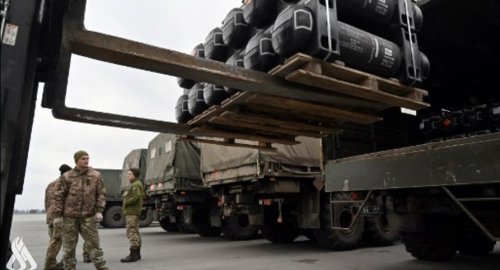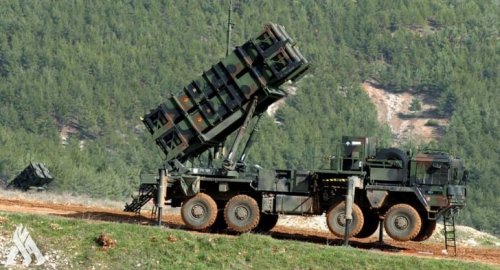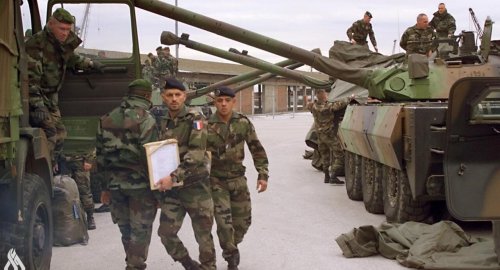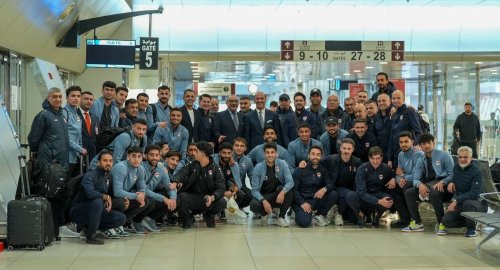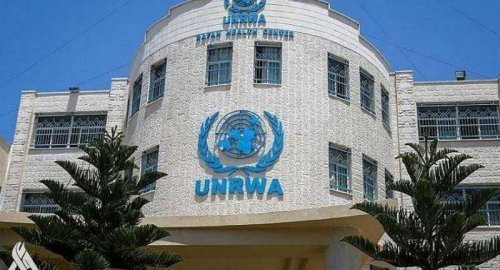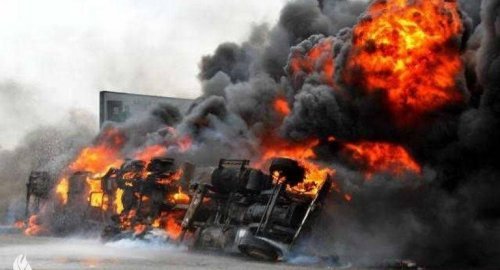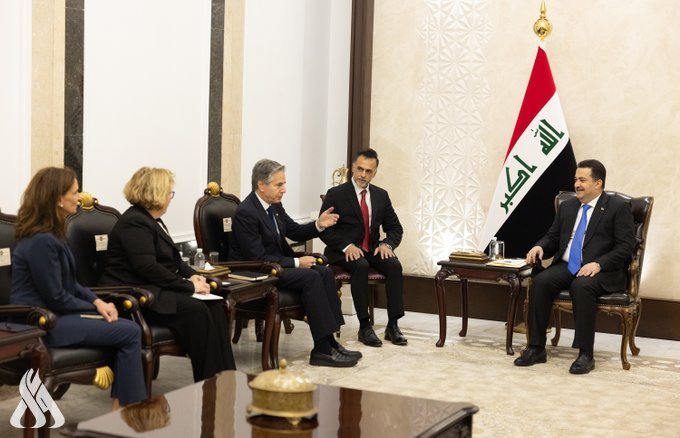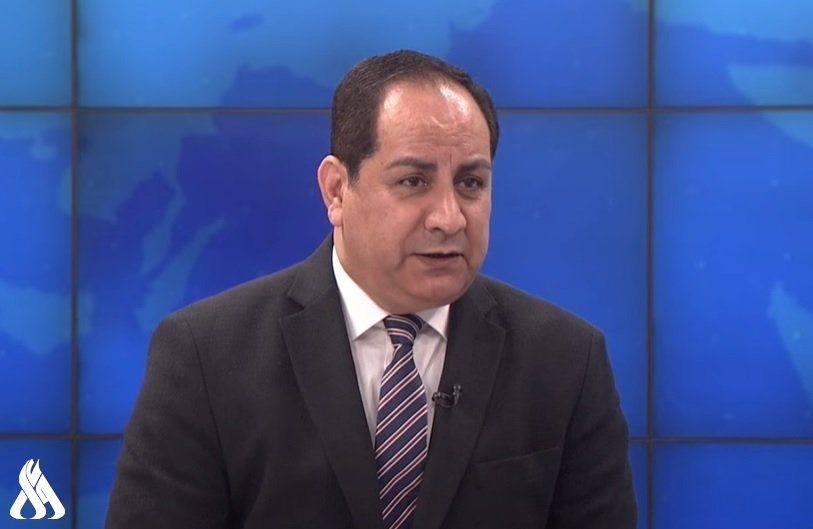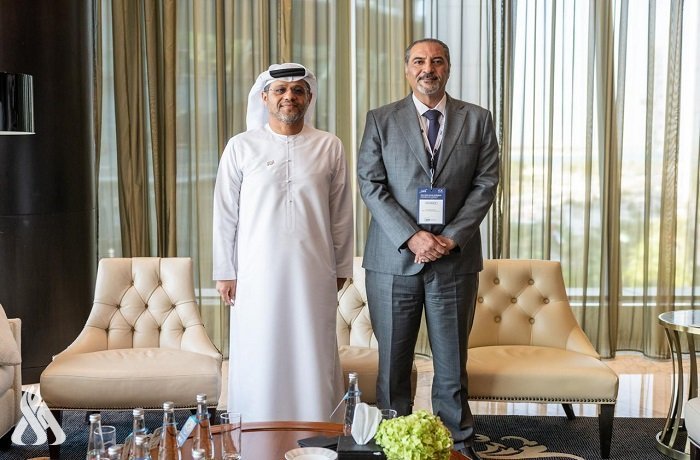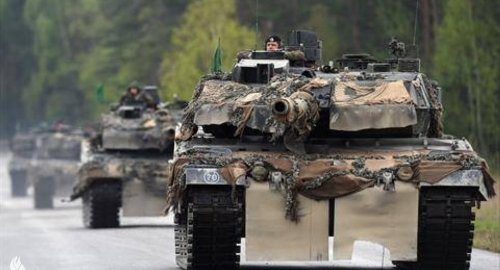
Germany and U.S. to send battle tanks to help Ukraine fight off Russia

- 26-01-2023, 10:20
INA- sources
The United States and Germany announced plans to send dozens of advanced battle tanks to Ukraine, which was hailed by Kyiv as a potential turning point in its fight to repel Russia’s invasion. But Moscow denounced the move as an “extremely dangerous” step.
Saying Ukraine now has a “tank coalition,” Ukrainian President Volodymyr Zelenskyy praised the commitments and urged allies to provide large quantities of tanks quickly. “The key now is speed and volumes. Speed in training our forces, speed in supplying tanks to Ukraine. The numbers in tank support,” he said in a nightly video address on Wednesday.
Andriy Yermak, head of Ukraine’s presidential administration, stressed in a post on the Telegram messaging app that the tank commitments so far were “only the beginning. We need hundreds of tanks.”
U.S. President Joe Biden announced his decision to supply 31 M1 Abrams tanks hours after Berlin said it would provide Leopard 2 tanks.
Maintaining Kyiv’s drumbeat of requests for more Western military aid, Zelenskyy said he spoke to NATO Secretary General Jens Stoltenberg and called for long-range missiles and aircraft. Ukraine’s allies have already provided billions in military support including sophisticated U.S. missile systems.
Washington had been wary of deploying the difficult-to-maintain Abrams but had to change tack to persuade Germany to send to Ukraine its more easily operated Leopard 2 tanks — the workhorse of NATO armies across Europe.
Biden said the tanks were needed to help the Ukrainians “improve their ability to maneuver in open terrain.”
Germany, previously the West’s holdout amid deep reluctance to export offensive weapons given its Nazi past, said it would send an initial company of 14 tanks from its own stocks and also approve shipments by allied European states.
The eventual aim would be to supply Ukraine with two battalions of Leopards, typically comprising three or four companies each, the first to arrive within three or four months.
The Kyiv government has been calling for months for Western battle tanks that would give its forces greater firepower, protection and mobility to break through long-static front lines and potentially reclaim occupied territory in the east and south. Ukraine and Russia have both relied primarily on Soviet-era T-72 tanks, which have been destroyed in their hundreds in 11 months of war.
Senior U.S. officials said it would take months for the Abrams to be delivered and described the move as providing for Ukraine’s long-term defense.
“There is no offensive threat to Russia (itself),” Biden said. Moscow increasingly casts the war as a perilous face-off between Russia and the U.S.-led NATO military alliance.
The German and U.S. moves definitively scrapped one of the last taboos in Western support for Ukraine: providing arms that have a mainly offensive rather than defensive purpose. The West has sought to avoid provoking Russia, a nuclear power.
Moscow reacted with fury to Germany’s announcement. “This extremely dangerous decision takes the conflict to a new level of confrontation,” said Sergei Nechayev, Moscow’s ambassador to Germany.
Berlin said it would send further military aid to Kyiv, including air defense, heavy artillery and multiple rocket launchers.
Pledges to Ukraine from other countries that field Leopards, which Germany made in the thousands and exported to allies in NATO, multiplied this week with announcements from Poland, Finland and Norway.
Spain and the Netherlands said they were considering it. Britain offered 14 of its comparable Challenger tanks and France is considering sending its Leclercs.
Moscow says supplying modern offensive weaponry to Ukraine will only postpone Russia’s inevitable victory. Anatoly Antonov, Russia’s ambassador in Washington, said deliveries of U.S. tanks would be “another blatant provocation.”
Since Ukraine clawed back some territory in the summer and autumn of 2022, the war has become a bloody, deadlocked slog and Kyiv believes Western heavy weapons can restore its momentum.
The Kyiv government acknowledged on Wednesday its forces had withdrawn from Soledar, a small salt-mining town in the east that Russia claimed to capture more than a week ago, its biggest gain for more than six months.
The town is close to Bakhmut, a larger city that has been the focus of an intense Russian assault for weeks.
The Russian-installed governor of Ukraine’s Donetsk region said units of Russia’s Wagner contract militia were moving forward inside Bakhmut, with fighting on the outskirts and in neighborhoods recently held by Ukraine.
Since invading last February, Russia has killed thousands of civilians, forced millions from their homes and reduced entire cities to rubble.
Moscow says its “special military operation” was necessary to stem a security threat arising from Ukraine’s ties to the West, which it now portrays as seeking to destroy it. Kyiv and its allies say Ukraine never menaced Russia and the invasion is a war of aggression to subdue a neighbor and seize land.
Source: japan times
US Central Command: We killed ISIS terrorist leader Abu Yusuf in Syria
- International
- 06:12
Sweden Will No Longer Fund UNRWA Aid Agency
- International
- 02:10
Seven dead, dozens injured in India tanker blast
- International
- 02:00
Liverpool compete with Real Madrid to sign Olympique Lyonnais star
- Security
- 24/12/19
ISC, ADX discuss Strengthening Economic Ties
- Economy
- 24/12/16
Iraq assumes presidency of Arab Investment Company’s Executive Board
- Economy
- 24/12/17
